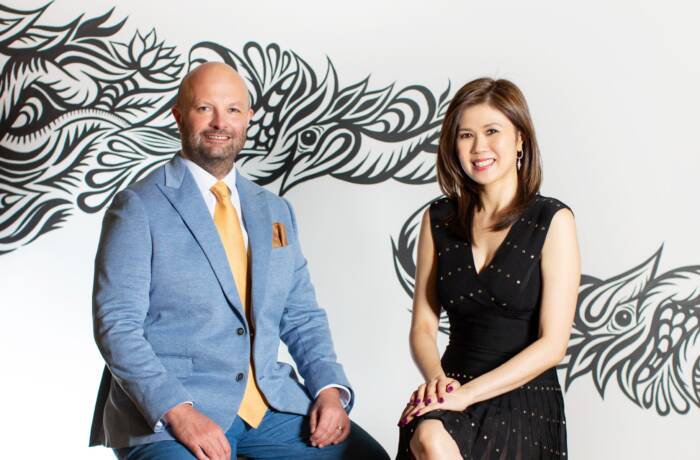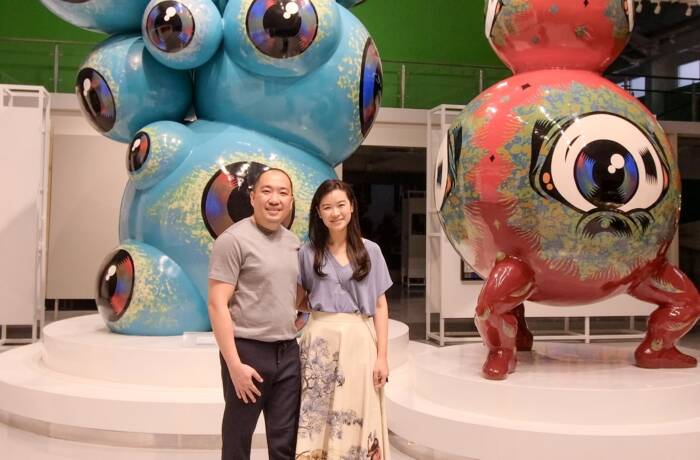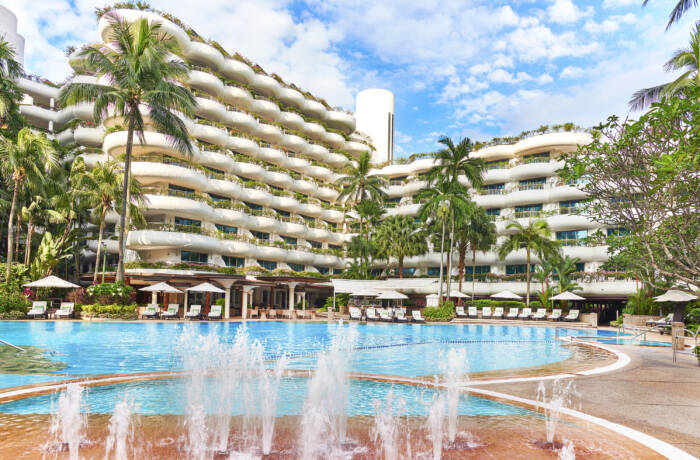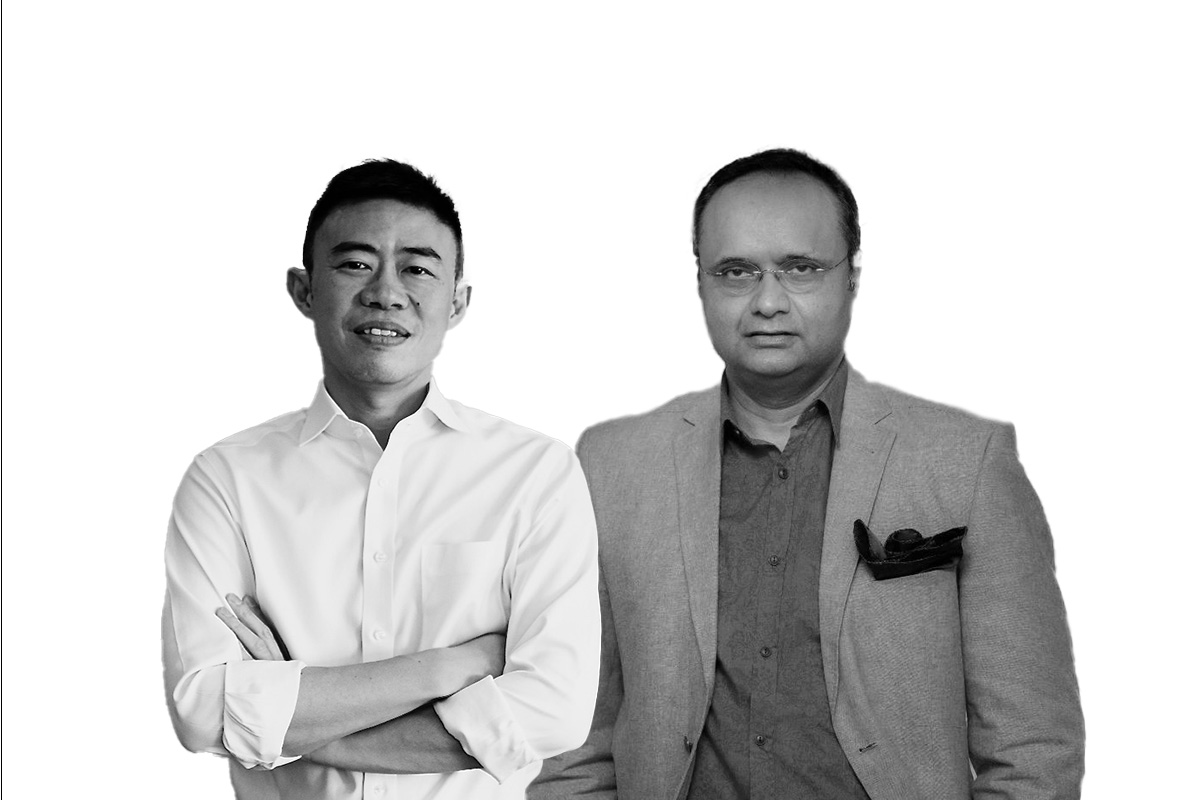
Alan Lau and Durjoy Rahman. Photomontage by Isabel Phillips
Alan Lau is Vice Chairman of M+ Museum, the era-defining new institution in Hong Kong’s West Kowloon district. Here he speaks with philanthropist and collector Durjoy Rahman about why private individuals need to support artists and art activations, and how Asia is moving to control its own narratives in the cultural world. Moderated by LUX Leaders & Philanthropists Editor, Samantha Welsh
LUX: Why is private philanthropy and engagement important in bringing art to a broader audience in general and particularly in Asia?
Alan Lau: Private philanthropy and patronage are critical because governments rarely cover arts funding entirely. The percentage contribution from UK public sources is higher than in the US but patrons are needed not just for the money they bring in but for their networks, resources and connections that enable museums to develop.
One particularly interesting phenomenon is China where there are over a thousand private museums established by collectors. Many are located in Beijing, Shanghai and the largest cities, but a lot of them are set-up in corporate headquarters or the collector’s hometown, bringing art to a community that may not have had access to art before.
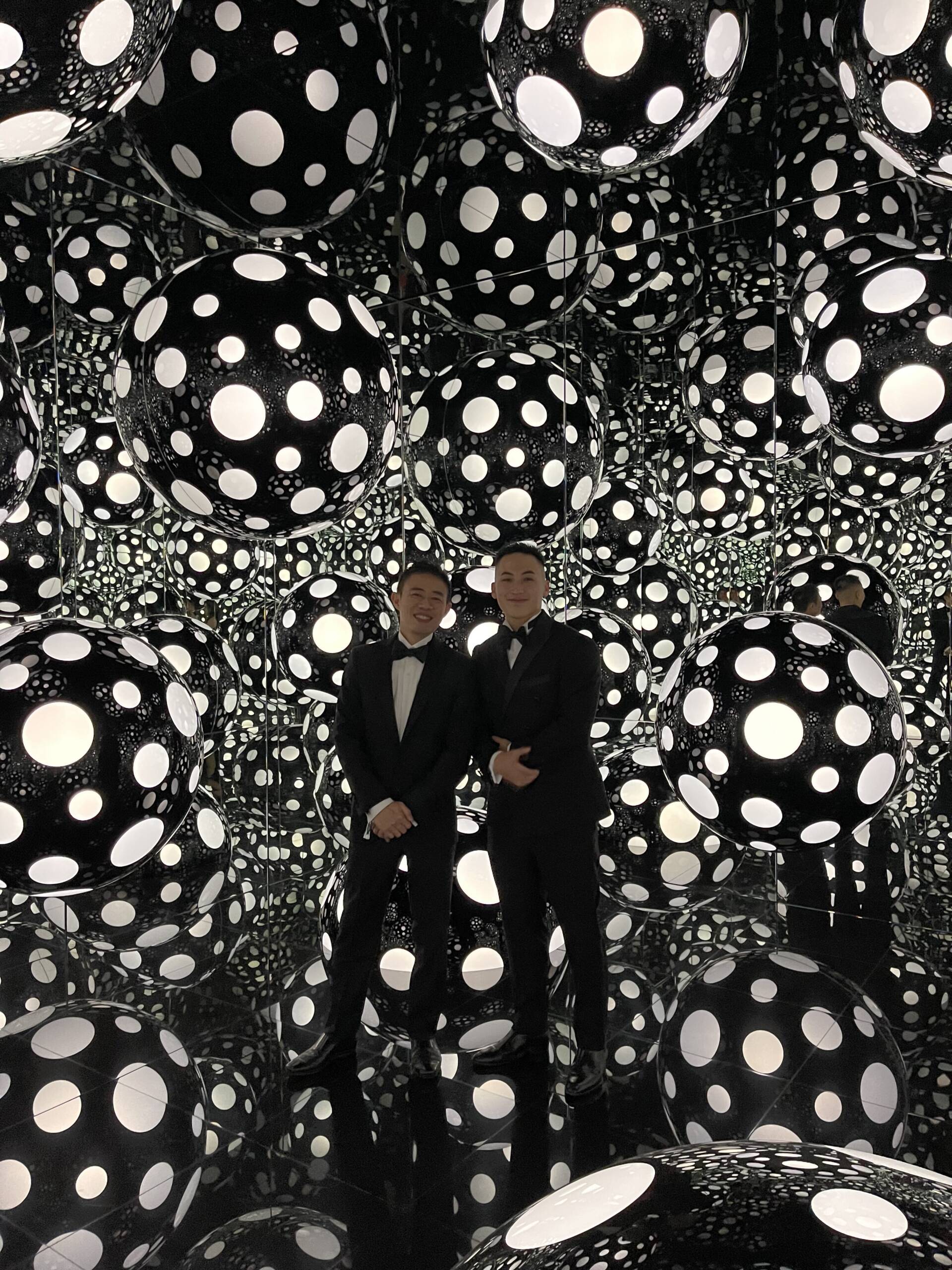
Alan Lau within the exhibition, ‘Yayoi Kusama: 1945 to Now’
Durjoy Rahman: Conventionally art philanthropy was the preserve of a small proportion of society. Patronage was offered by this tiny minority for centuries until now, in the 21st century. This is a new era for patronage. For our foundation, patronage involves strategic social investment into creativity and innovation for the wider public benefit. It takes account of our collective history, original cultures, and future directions and fosters the development of a more equitable, sustainable society.
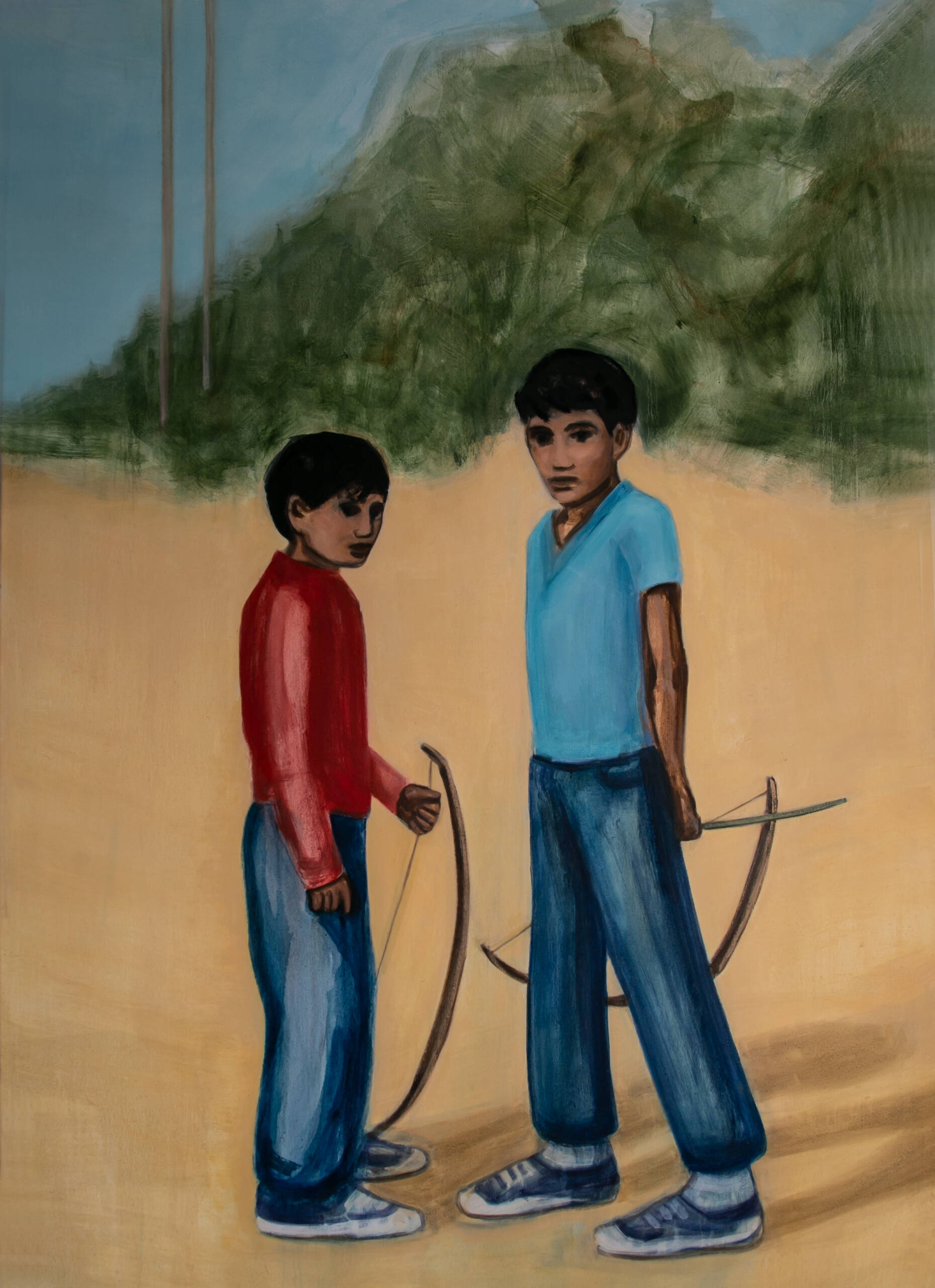
‘Archers’ (2021), by Matthew Krishanu, from the Durjoy Bangladesh Foundation Collection
I am a business owner but I still felt that the economic landscape of GDP and foreign investment are not the only way to measure the development of a society. Art and culture help define who we are and where we came from, give rein to our imagination and support social justice.
LUX: Why is that particularly important in Asia?
AL: The benefit of not having a long history of arts philanthropy is that people experiment with different models. When wealth creation happens in this part of the world, it comes with the tradition of giving back and that is where the phenomenon of museums founded locally back in the hometown came from. The idea has propagated only over the past decade really.
Follow LUX on Instagram: @luxthemagazine
LUX: How has patronage and philanthropic support for institutions changed? And how should it change?
AL: It has always been the private patrons who have funded programs and supported curatorial roles, put their names on buildings and so on. There has been innovation in the institutional space about 20 years ago, starting from TATE Modern setting-up International patron groups in North America, Asia, MENA and growing to over ten committees. The Guggenheim and Pompidou have something similar. These patron groups bring people from different regions to support programming, curatorial research and exhibitions. So these are not municipal museums but institutions that serve a global audience and have a global perspective. The global patrons help attract resources into specific acquisitions and research. This is relatively new for museums. With corporate sponsorship too there is a lot of change.
DR: With patronage, we need also to open a conversation about overcoming cultural barriers. South Asia has a long history of art and culture but also long history of being colonised. So our arts and cultural heritage have not been projected properly. When global art movements started, the major arts and cultural institutions were set up in Europe. This meant that our legacy was not represented or discussed. The arts’ press, academics, art writers, also all were European, so there was no discussion or projection of our art heritage. We were left behind.
So with art philanthropy, what has changed over the past decade, has been led by major biennial art fairs and significant curatorial institutions, particularly in China, in Hong Kong like M+, India, Dubai and Saudi Arabia where I was recently in AlUla and Riyadh. We are all reassessing our lost identity, which was always there but not at the forefront simply because we did not own our story or have the press and art critics onside. You can have magnificent works but it is not enough if no one shares it with the wider audience.
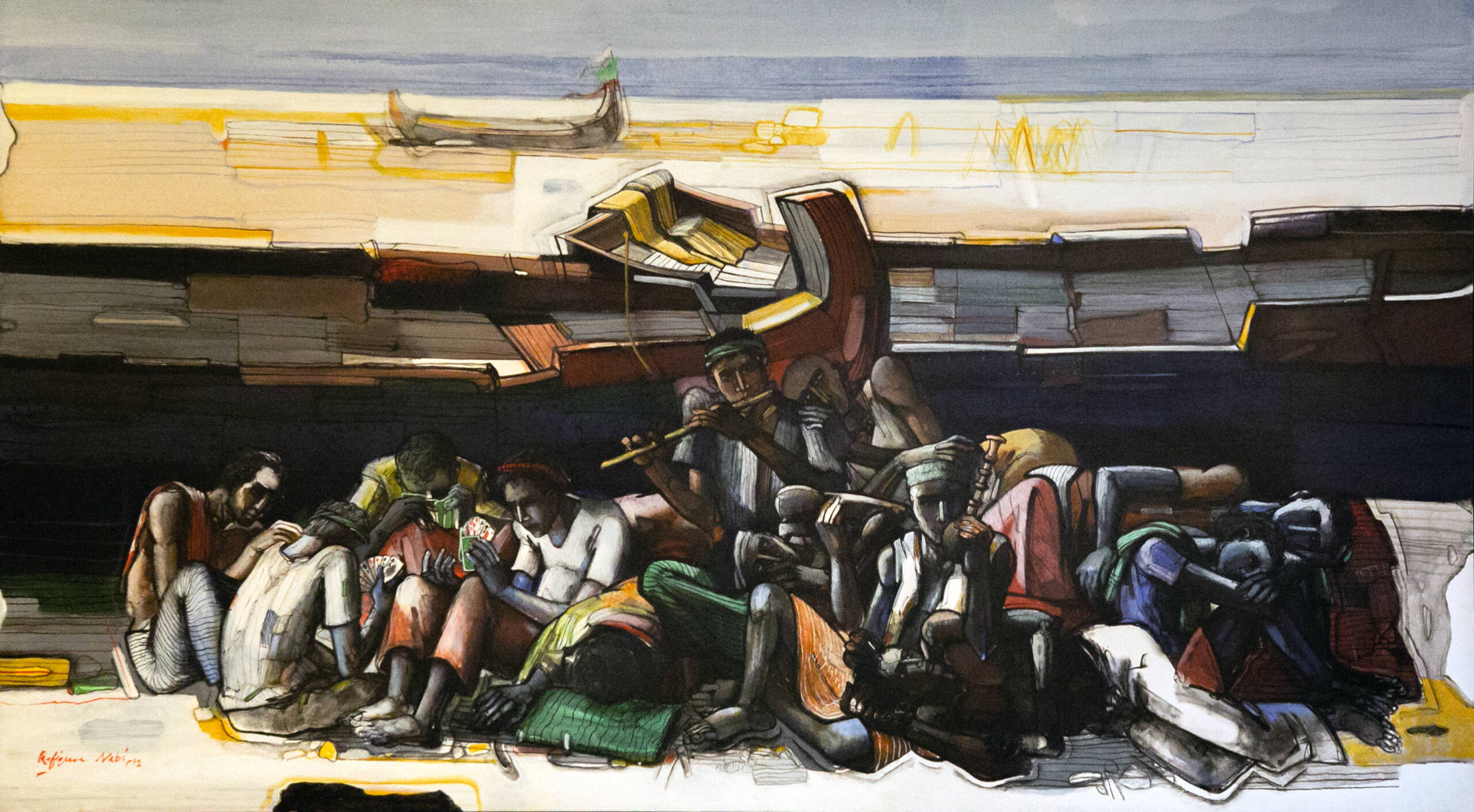
‘Fishermen at rest’ (2012), by Rafiqun Nabi, from the Durjoy Bangladesh Foundation Collection
LUX: How does Asia overcome cultural barriers to art in terms of its creation and appreciation, as it’s still not considered a ‘real job’ in many quarters?
AL: There is a deep history of art in Asia but it is interesting you ask why art is not considered a real job here. Once you say ‘job’ that says there is a market and assumes a market for local art. That is a very interesting topic for Asian artists right now and comes down to cultural confidence. We see that in Korea where Koreans collectors like to buy Korean art. Hong Kong collectors have begun to collect Hong Kong artists in the last couple of years, and the Japanese are famous for not collecting Japanese art. The Chinese collected a lot of Chinese art around the Olympics and now they’re back to collecting western art.
It really comes down to cultural confidence, to what they think is good, so it is very easy to gravitate toward the Anglo-Saxon and Western art world. It’s difficult, but it’s the gold standard for whatever is best at the time, from Picasso or most recently to George Condo or Jeff Koons. Locals need to learn to develop that cultural confidence to buy local and to support local art for culture to flourish.
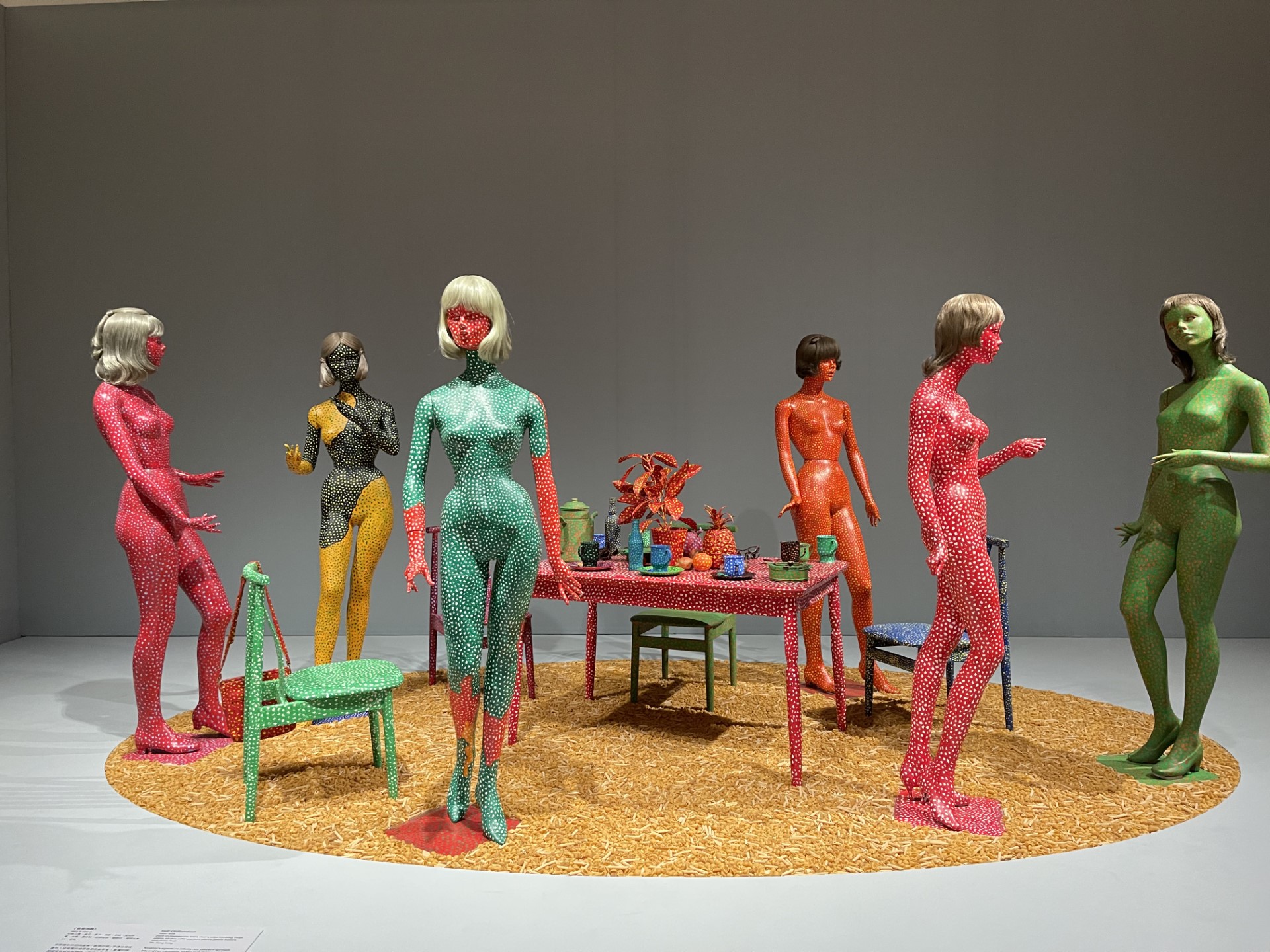
From the M+ exhibition, ‘Yayoi Kusama: 1945 to Now’
DR: When we talk about art markets, I agree with what you say, Alan. In South Korea, the Koreans are buying the Korean artists who are represented by the western galleries. So the locals are going to the western galleries originally from US and Europe, who are exhibiting at fairs in Korea, effectively buying their local artists via those western intermediaries.
In Bangladesh, as an example, we are a population of 180 million. If the 1% or .5% started buying art, there would be no supply in the market! So why is .5% of an entire nation not interested in buying art? It is because creative people, not only the artists but curators, gallerists, collectors are not creating the momentum to promote investment in art. And there is a problem with status and perception. In Bangladesh there is an appetite and a market for luxury brands but not for art. The wider audience does not aspire to buy local art.
In the western world, particularly where I have seen in France, Germany, Netherlands, Switzerland, and Canada where I lived for a long time, creatives are supported with subsidised housing or studio space so they can afford to produce art. That just doesn’t exist in a country in like Bangladesh. Artists graduate from an important school but change their profession for a better life.
I was preparing a lecture for my HK session for Sotheby’s Institute and commented that In Bangladesh we buy a lot of western art. Why are we buying so much western art and supporting western artists? Forget about aspiration, many of those artists are time-tested investments and our local artists are not. George Condo or Ai Wei Wei will be keeping value for decades. I want to and do support local artists but it’s a bigger picture.
LUX: How does Asia become a leader in art rather than participating in the so-called western gaze?
AL: No one will tell your story, you have to tell it yourself! While I love the Met or Tate or Guggenheim’s China show or Korea show, that is a fantastic spotlight but it is you who understands your story. One of the inaugurating shows of M+ was with Kusama and I think it was us telling that story from here in Asia that gave it a very different texture.
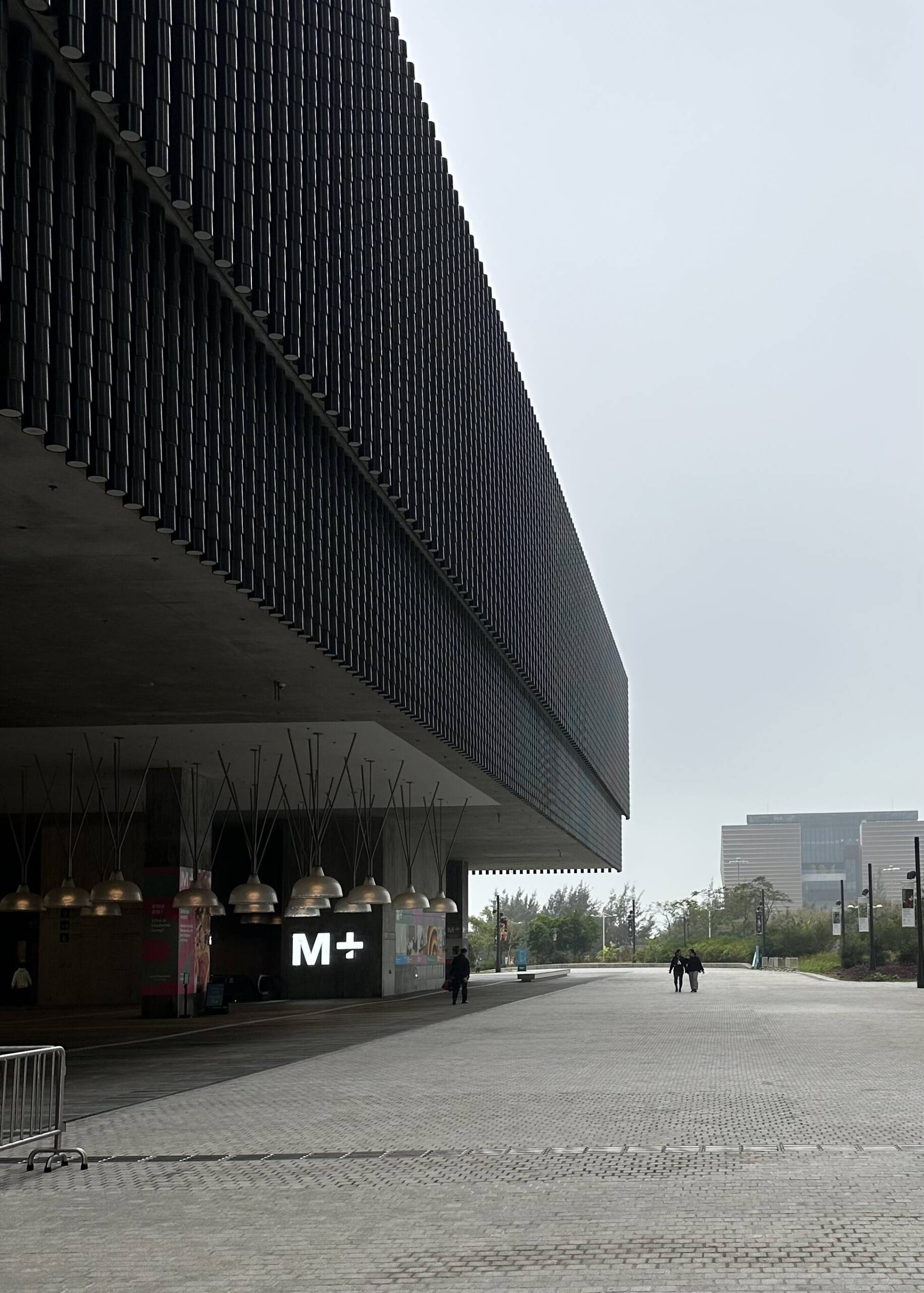
M+ Museum, is Hong Kong’s cultural hub for twentieth and twenty-first century art encompassing visual art, design and architecture, and moving image
M+ was set up to do just that, to be a Museum for Asia. One of the most touching things for me, two years after our opening when we welcomed the first group of visitors, was the overwhelming comment I heard from people saying is ‘Thank you! This is my Museum!’. These are not people from Hong Kong but from South Korea, Japan, Singapore and they see themselves in our collection. This is an Asian museum giving a voice and creating narratives and telling stories from an Asian point of view. We need more institutions to do that. You need to tell your own story.
LUX: What is it about being from Hong Kong and Dhaka that has contributed to your identity and vision for collecting?
AL: My collection is about stories that I feel privileged to talk about. The collecting vision is a reflection of who I am, which is someone born in Hong Kong, living in the city when it was a British colony, witnessing HK’s transition back to China, living through big changes, seeing the economic rise of China and the issues that come with all of that, living through all the tech development, broadband, now video, now AI. I have a strong link with artists from HK and the region and a strong relationship with technology with the context of my day job.
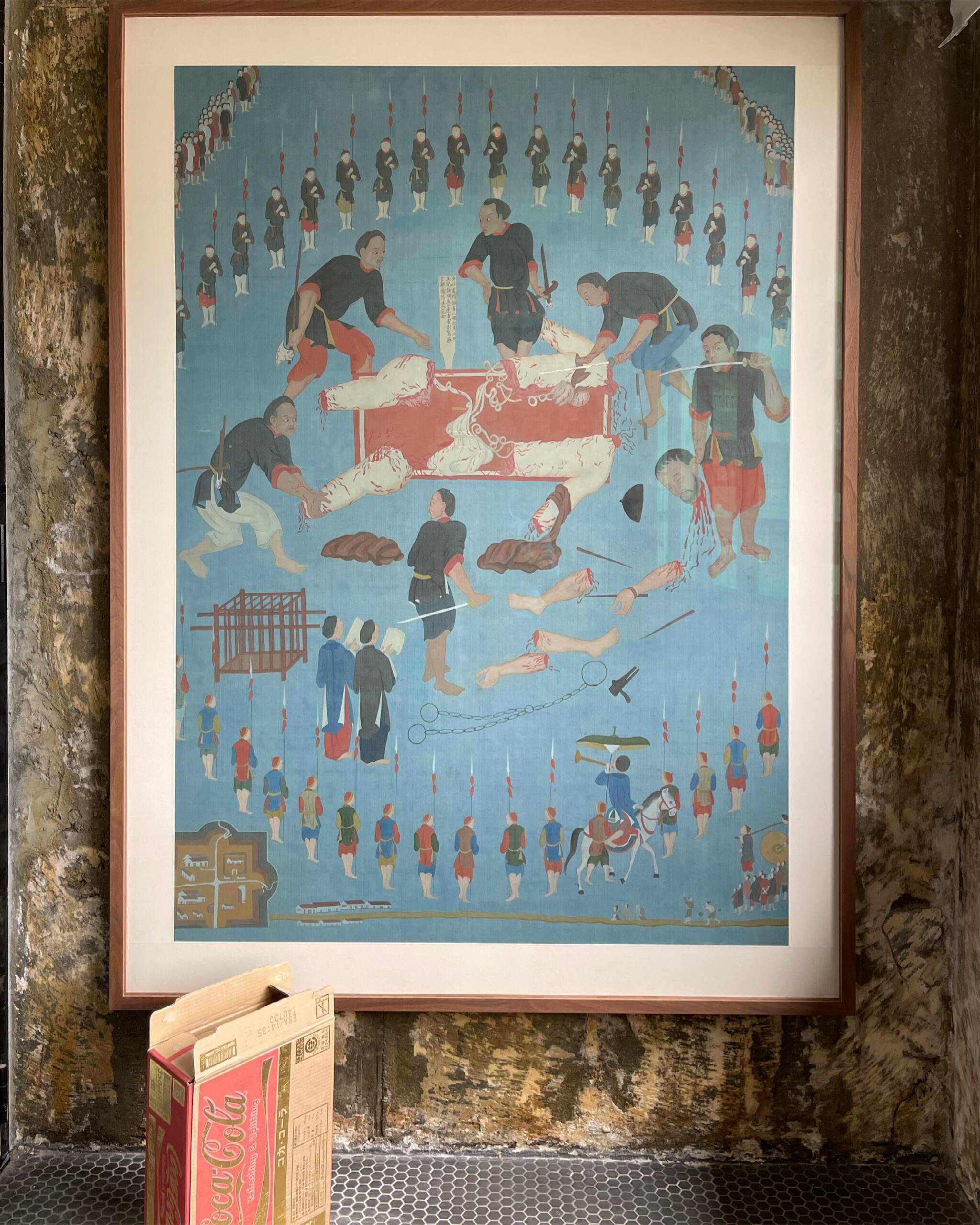
From Alan Lau’s expansive collection
DR: Dhaka is important in South Asia but for me Hong Kong is the centre of gravity in the so-called Far East because it is a connector to APAC and South Asia. Hong Kong and Bangladesh already had a connection historically and we represent a new “silk route”. We need to create Asian art power by amplifying the patronage of institutions like M+.
LUX: In what ways can innovative artists capture the essence of our time and realities?
AL: Artists are story-tellers, here to tell stories of our time. The best art is time-stamped but timeless. For example, at M+ right now, the most recent M+Sigg collection show is a controversial work by Chinese duo Sun Yuan and Peng Yu. It is set in an old people’s home, created nearly 20 years ago, taking the faces of the world political leaders at that time, and fast-forwarding them to when they are 80 years’ old sitting in automated wheelchairs that go round the hall so you see all these old people roaming around. Twenty years’ on how funny it is our world is still run by grey old men!
DR: That is true and sometimes when we talk about innovation, that does not mean it has to be technological innovation. At the end of the day you are talking about art. We are really talking about mental science and inventive hands that influence because it is about newness and original ideas. Art can’t be boring, or monotonous because we are not forced to look at art. Art has to inspire us and innovation is part of that inspiration process.
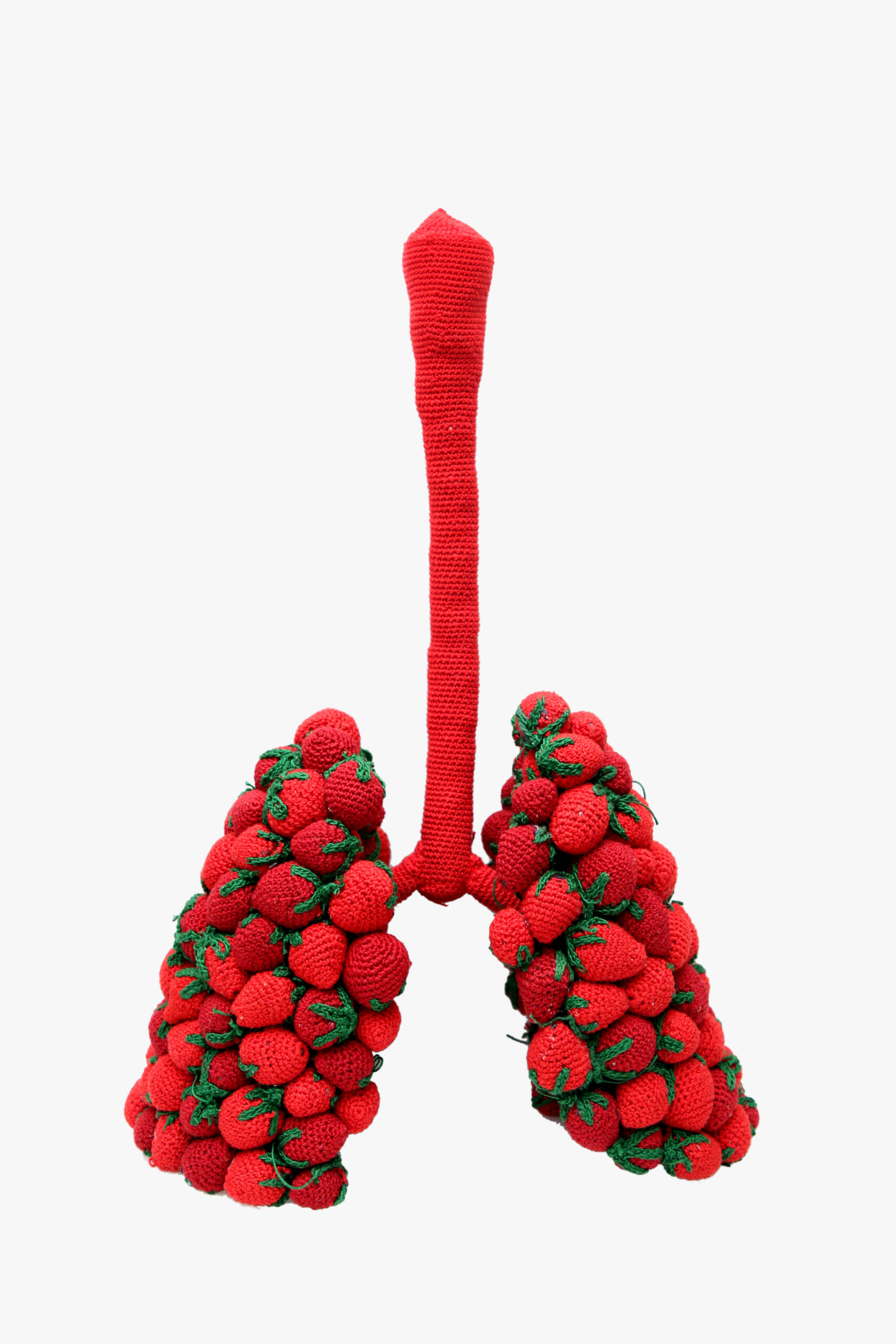
Organic To Organ – V (2022), by Shimul Saha, from the Durjoy Bangladesh Foundation Collection. Crochet weaving, cotton yarn and cotton
LUX: How has your interest in innovation catalysed your collecting journey, Alan?
AL: I am fascinated by artists who are very resourceful storytellers. They always find find the latest technology or way of production to present their ideas in new ways that offer fresh perspectives. This creates all kinds of interesting dynamics in our human relationship with technology. We have futuristic, experimental tech, with artists like Cao Fei from China showing humans’ chaotic relationship with technology, Camille Henrot on the abuse of social networks, dystopic work from Jon Rafman, and then of course Beeple and other digital artists. We have a much more tense relationship with technology and that’s reflected in the artistic output and practices.
LUX: What are you looking forward to at the Venice Biennale?
AL: I’m definitely looking forward to what Hong Kong will present. Trevor Yeung is someone we know very well because we worked with him at ParaSite and we have really seen him grow. Another one that’s going to be in the main Pavilion is Isaac Chong Wai, originally from Hong Kong but representing the diaspora, based in Berlin, with a lot to say on global topics.
DR: There will be some artists from Bangladesh, India and Pakistan there and I will be looking out for their practices, how they respond to the concept that the curator has identified like displacement, the diaspora, identity and cultural history. I like go to a national Pavilion to see how that country is portraying their art and culture, rather than look for the presentation of a particular artist.
Read More:
durjoybangladeshfoundation.org

